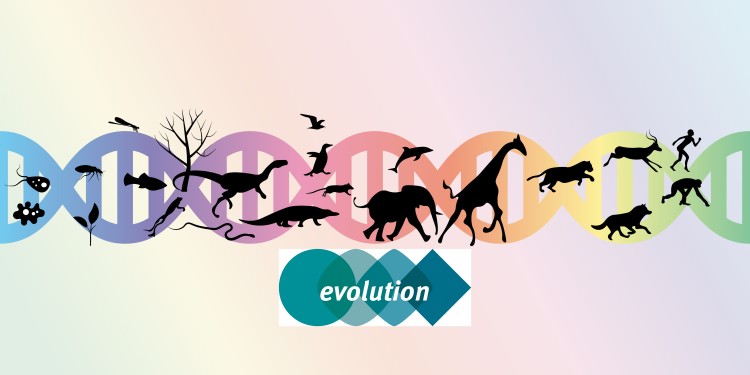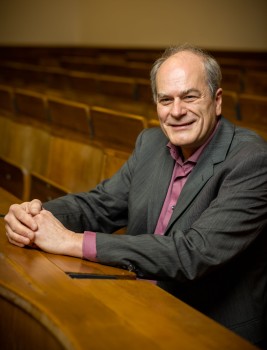
Research into evolution: four questions, four viewpoints
Did Charles Darwin invent the concept of evolution?

‘Evolution’ – from the Latin word ‘e-volvere’, to unroll (a scroll, for example) – has been used since the late 17th century to describe biological development. 150 years before Darwin, the concept meant the individual development of an organism: ontogenesis. A special ontogenetic hypothesis was termed ‘theory of evolution’: the entire organism was pre-formed, it was believed, in the egg cell or in the sperm, and development consisted only in its growth.
When Charles Darwin (1809 – 1882) presented his theory of the development of biological species through natural selection in 1858/59, the concept of evolution was still strongly embryological that he avoided it. It was only later, when other authors were increasingly using the word in a phylogenetic context, that he started using it himself.
Notions of phylogenetic evolution had already existed, and we find them in particular in the botanist and zoologist Jean-Baptiste de Lamarck (1744 – 1829). What was new with Darwin was the specification of an evolutionary mechanism. This explains, for the first time, the changes in species. Today, in addition to Darwin’s mechanism of variation, selection and inheritance, further evolutionary mechanisms are known to us such as genetic drift – i.e. the random change in the frequency of a gene variant within a population; or niche construction – the active modification of the environment by organisms, whereby the selection conditions also for subsequent generations are changed.
‘Evolution’ is also used outside biology, for example in the evolution of the cosmos or the geological evolution of the Earth’s surface. Here, the term is used more generally for long-term processes generating new structures. And what about cultural evolution? Is this evolution in a specifically biological sense, or in a more general one? Superficial similarities with biological speciation should not make us jump to premature conclusions. The wide range of mechanisms of cultural change need to be investigated separately.
What role does evolution play in research into diseases?

The evolutionary perspective considers health and illness against an individual’s genetic background and in the context of the respective environment. In this, evolutionary processes such as mutation, selection and drift play a particularly important role. The genomes of disparate ethnicities differ greatly, for example – both in their genetic variations and in the structure of the genome. As a result of the so-called bottleneck effect, for example – a drastic reduction in genetic variation – the genomes of European people are much less variable than the genomes of Africans, who represent the oldest population of humankind.
Starting from Africa, the human species spread out over the planet in a series of waves of migration. As a result of the evolutionary adaptations to each environment, there are clear differences between the genomes of the human populations in Africa, Asia and Europe. This genetic variation influences not only the predisposition to illness and disease but also, as a consequence, how a patient responds to medicines. This comes into effect when physicians try to make better predictions regarding an individual’s risk of illness on the basis of his or her interaction with the respective environment and by making use of clinical parameters, biomarkers and genetic information. In other words, evolutionary medicine plays an important role in research into complex (widespread) diseases.
Does evolution mean ever higher development or progress?

Some organisms take things to extremes: parasites often have an extremely reduced body. The parasite Sacculina, for example, consists only of a ramified network of filaments in the body of its host, a crab. Sacculina is closely related to the well-known barnacles. These have a body, with everything that goes with it. Ultimately, it is a question of adaptation to the respective environment, which can go hand in hand with increased complexity – or with reduction.
There is, finally, an interesting observation to be made when comparing the genetic material DNA. Most of the differences between individuals probably have no influence on adaptation – they are simply neutral. So in this case too we can hardly speak of progress. The conclusion is that even if the process of evolution, as a whole, represents a development towards more complexity, this is not true for every single example.
Did humans invent language, or is it a product of evolution?

Under the influence of the neurosciences, and in the context of the philosophy of mind, Noam Chomsky – the founder of modern linguistics – defined language as “a biological property, a sub-component (above all) of the brain, an organ of the mind/brain”. The old question of whether humans “invented” language, or whether language arose as the result of an “evolutionary leap” has thus become answerable: organs “grow” as the brain increases in volume. The neurologist and linguist Eric Lenneberg actually spoke of a “language-specific maturation plan”, activated not only phylogenetically but also ontogenetically in the relevant development phase of the organism.
When a small child learns to speak, building up a system of phonemes, this process begins by forming the contrast between labial and dental sounds, and between nasal and non-nasal sounds – [m] and [b] or [d] and [t]. The sounds produced by the first humans are often described as grunting and clicking sounds formed at the back of the oral cavity or in the throat. What sounds Neandertals produced, and how, remains largely a matter of speculation and is a subject of controversial discussion. But their body language, gestures and facial expressions accompanied the production of sounds and served to convey information as well as to express emotions. Language really is an “organ”, a natural product in a process of growth.
This article is from the university newspaper wissen|leben No. 1, 31 January 2024.
